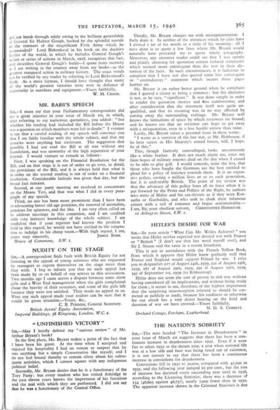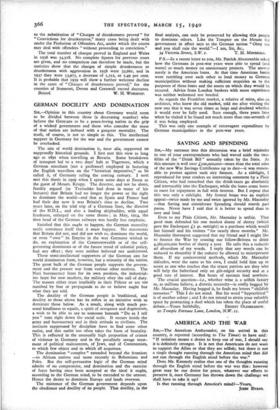THE NATION'S SOBRIETY
Sut—The note headed " The Increase in Drunkenness " in your issue of March 1st suggests that there has been a con- tinuous increase in drunkenness since 1932. Even if it were fair to select 1932 as the datum year, a year when national life was at a low ebb and beer was being taxed out of existence, it is not correct to say that there has been a continuous increase in convictions for drunkenness.
Convictions fell in 1932 to 30,000, compared with 42,000 in 1931, and the following year jumped 20 per cent., but the rate of increase has declined every succeeding year until in 1938, according to the Licensing Statistics, there was a decrease of 154 (46,603 against 46,757), nearly 7,000 fewer than in 193o. The apparent increase shown in the Criminal Statistics is due
to the substitution of " Charges of drunkenness proved " for " Convictions for drunkenness," many cases being dealt with under the Probation of Offenders Act, under which the courts may deal with offenders " without proceeding to conviction."
The total number of charges proved in England and Wales in 1938 was 54,518. No complete figures for previous years are given, and no comparison can therefore be made, but the statistics show that the charges of simple drunkenness or drunkenness with aggravation in 1938 were 52,661, and in 1937 they were 53,975, a decrease of 1,312, or 2.49 per cent. It is probable that 1939 will show a further welcome decline in the cases of " Charges of drunkenness proved," for the counties of Somerset, Devon and Cornwall record decreases.























































 Previous page
Previous page